French Press Brew Guide
French press is how many coffee lovers first get introduced to manual brewing at home. Despite it being more for beginners (given its simpler brewing approach and operation) it can still bring out coffee's deliciously nuanced flavors.
Unlike pour over brew methods, french press is a full immersion brewing device that makes use of a metal mesh filter. Since the coffee steeps in the hot water (just like steeped tea), this results in a fuller body and increased texture due to (1) the final brew retaining more of the coffee oils and (2) some coffee fines seeping past the metal mesh filter.
If you're just starting out, this french press brew guide is the perfect place to get started!
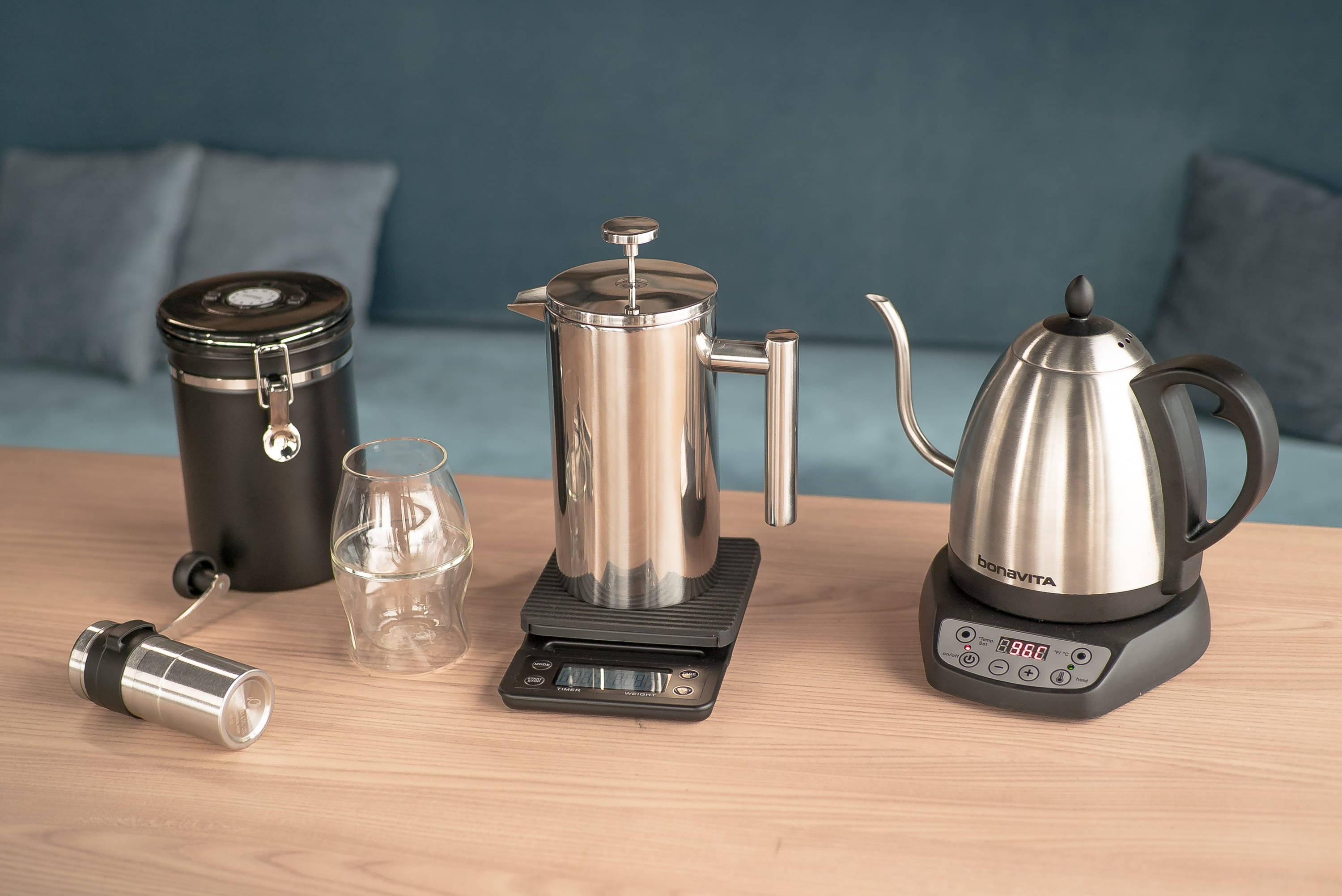
What you'll need
- 34g of freshly roasted whole coffee beans
- Gooseneck kettle (electric/stove) to boil water
- Filtered water or mineral water
- Hand grinder or automatic grinder (with conical or round burrs for best results)
- Digital Scale
- Timer
- French Press
- Stirring stick or spoon
- Your favorite coffee cup
Step 1.
Prepare the water
- Boil to the desired temperature. Boil enough water to fill your French Press to ¾ full.
- Pre-heat your French Press using the hot water and discard this water before brewing.
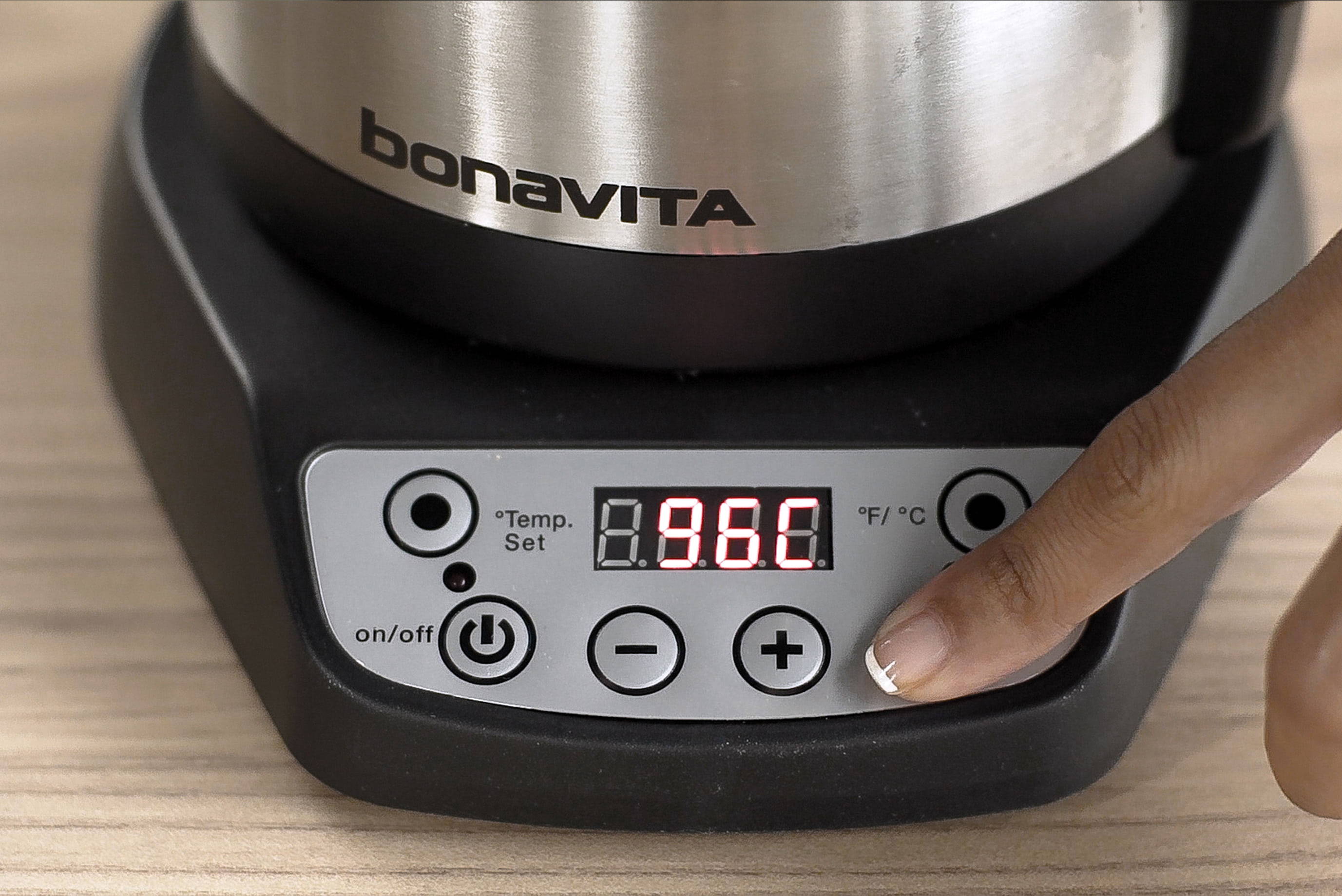
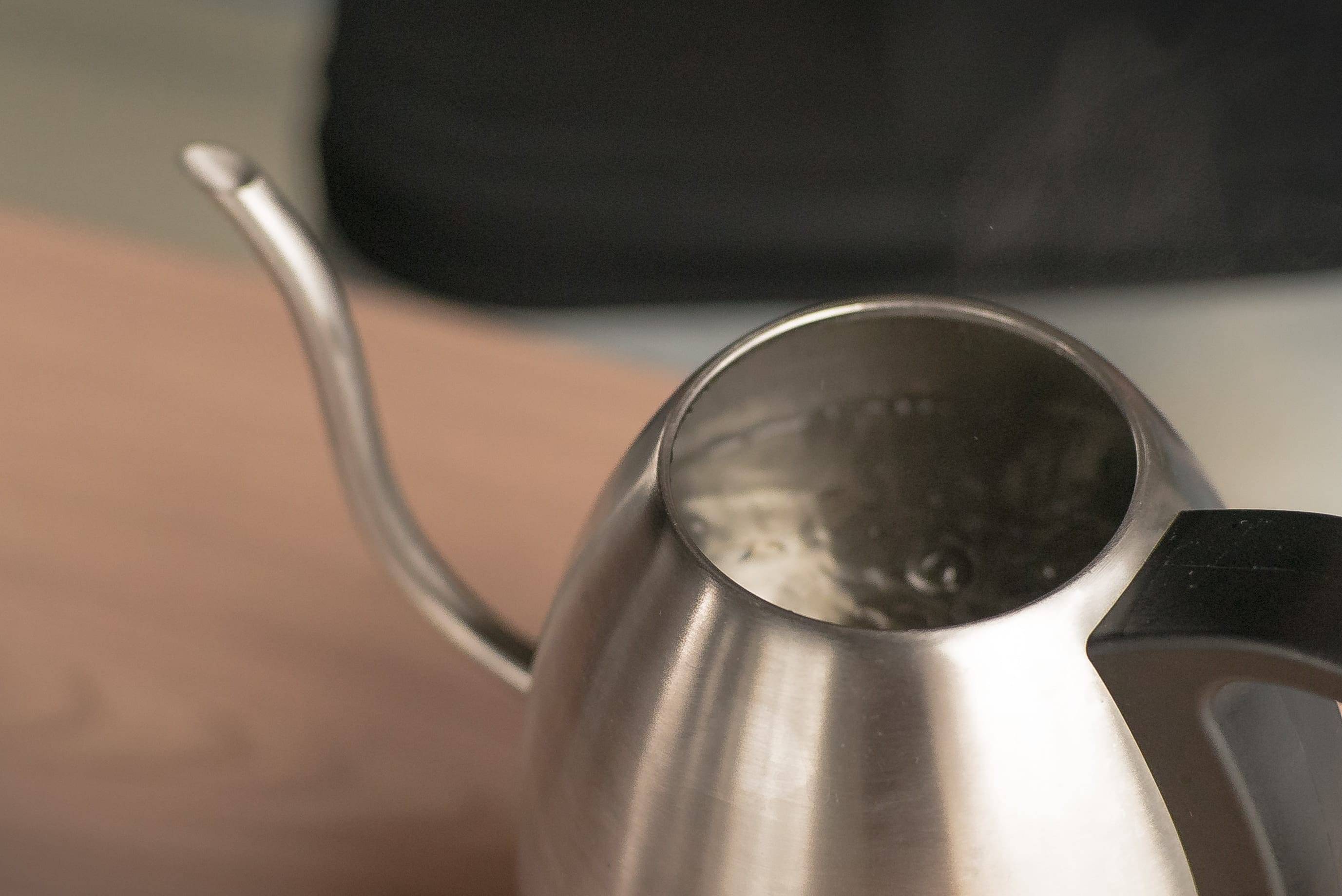
Step 2.
Weigh out the desired amount of coffee
- Use a digital scale to measure the whole bean weight before grinding.
- The ratio of coffee to water varies depending on the type of coffee you are brewing and your preferred strength. For this recipe we recommend starting with 34g of coffee with 400g of water (1:12 coffee to water ratio), then adjusting the ratio according to your taste.
- For stronger coffee, brew with 1:11 coffee to water ratio
- For weaker coffee, brew with 1:15 coffee to water ratio
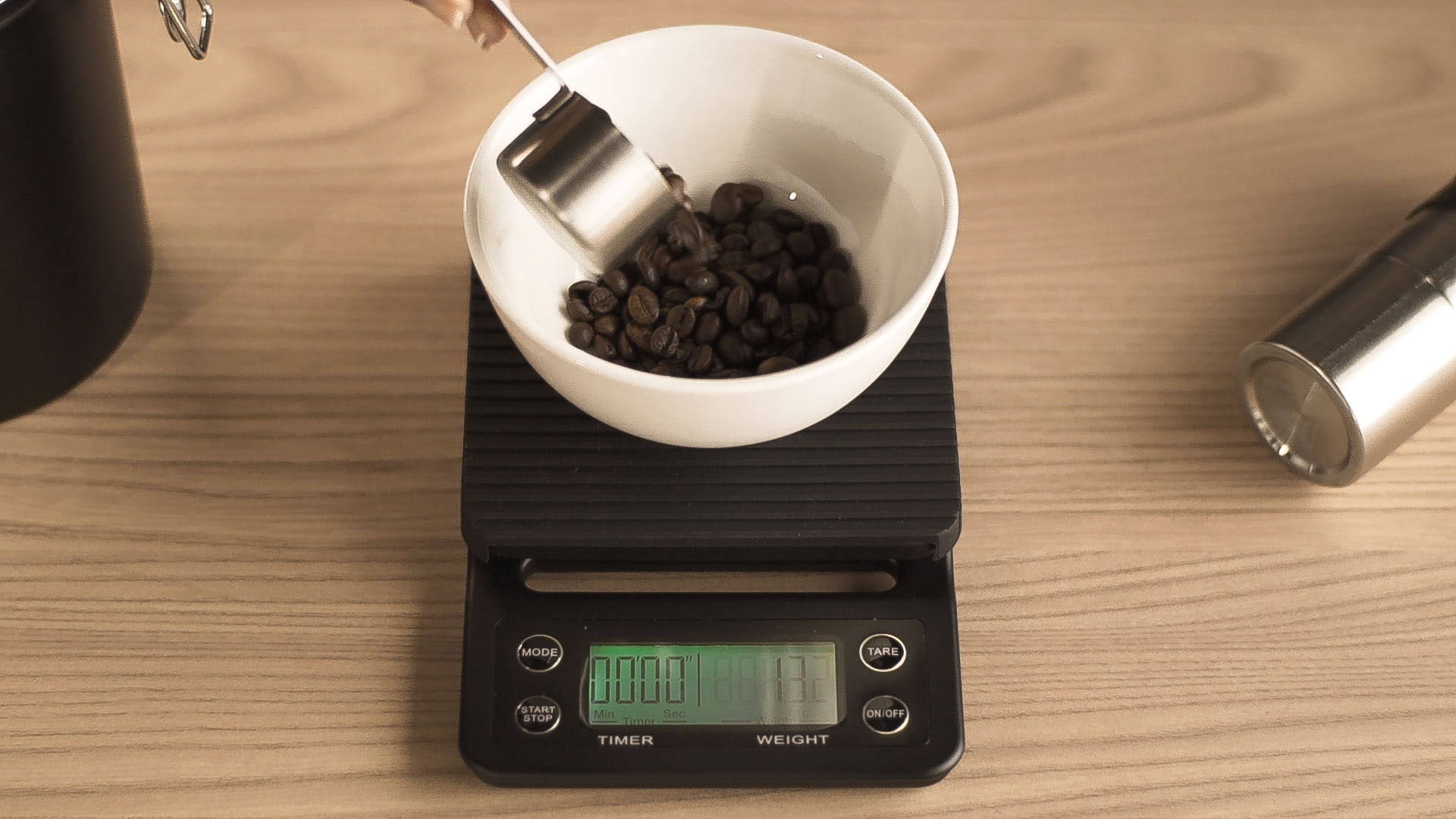
Step 3.
Grind your coffee beans
- Aim for a coarse even fine grind size with coarseness resembling coarse sand.
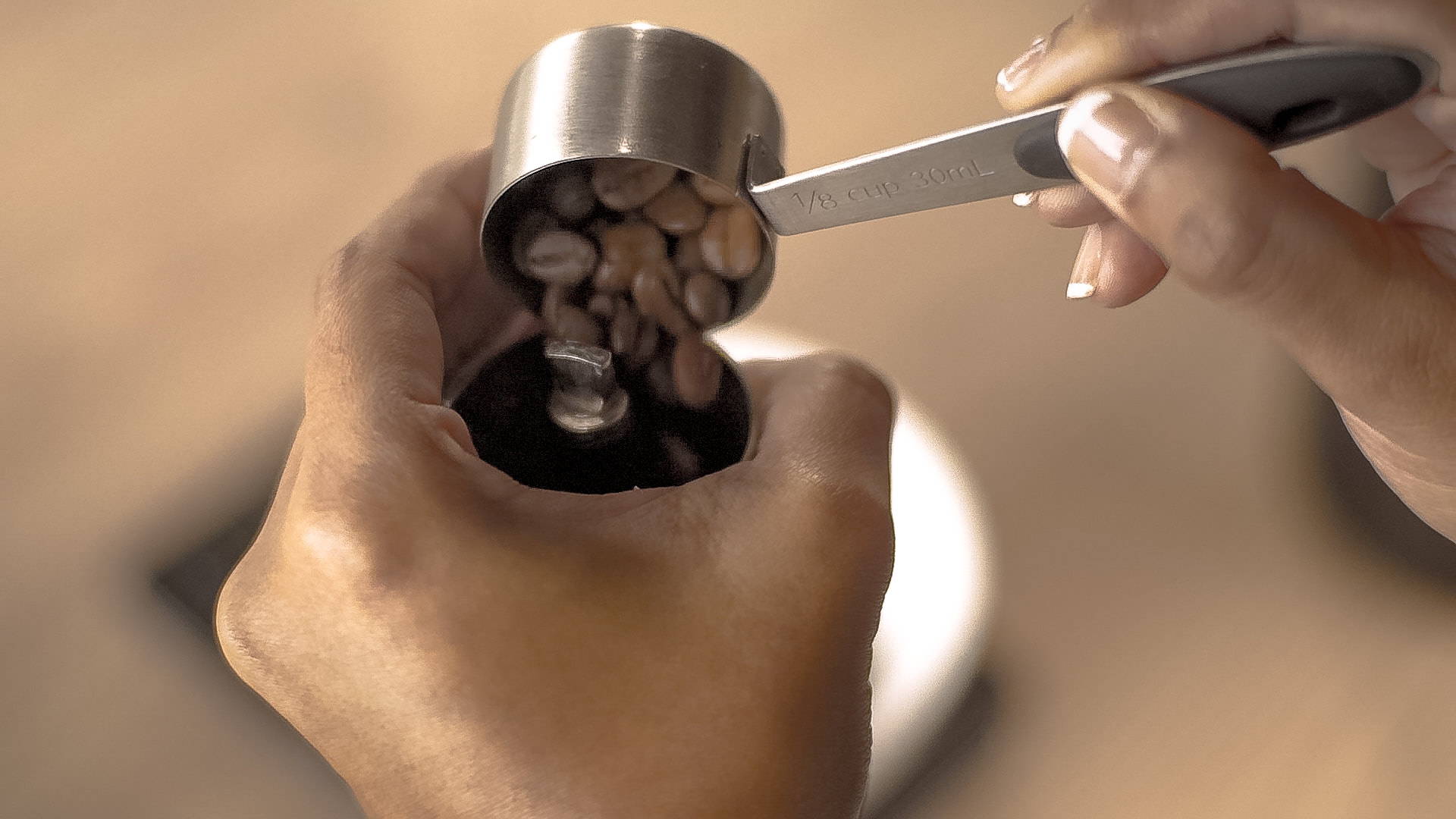
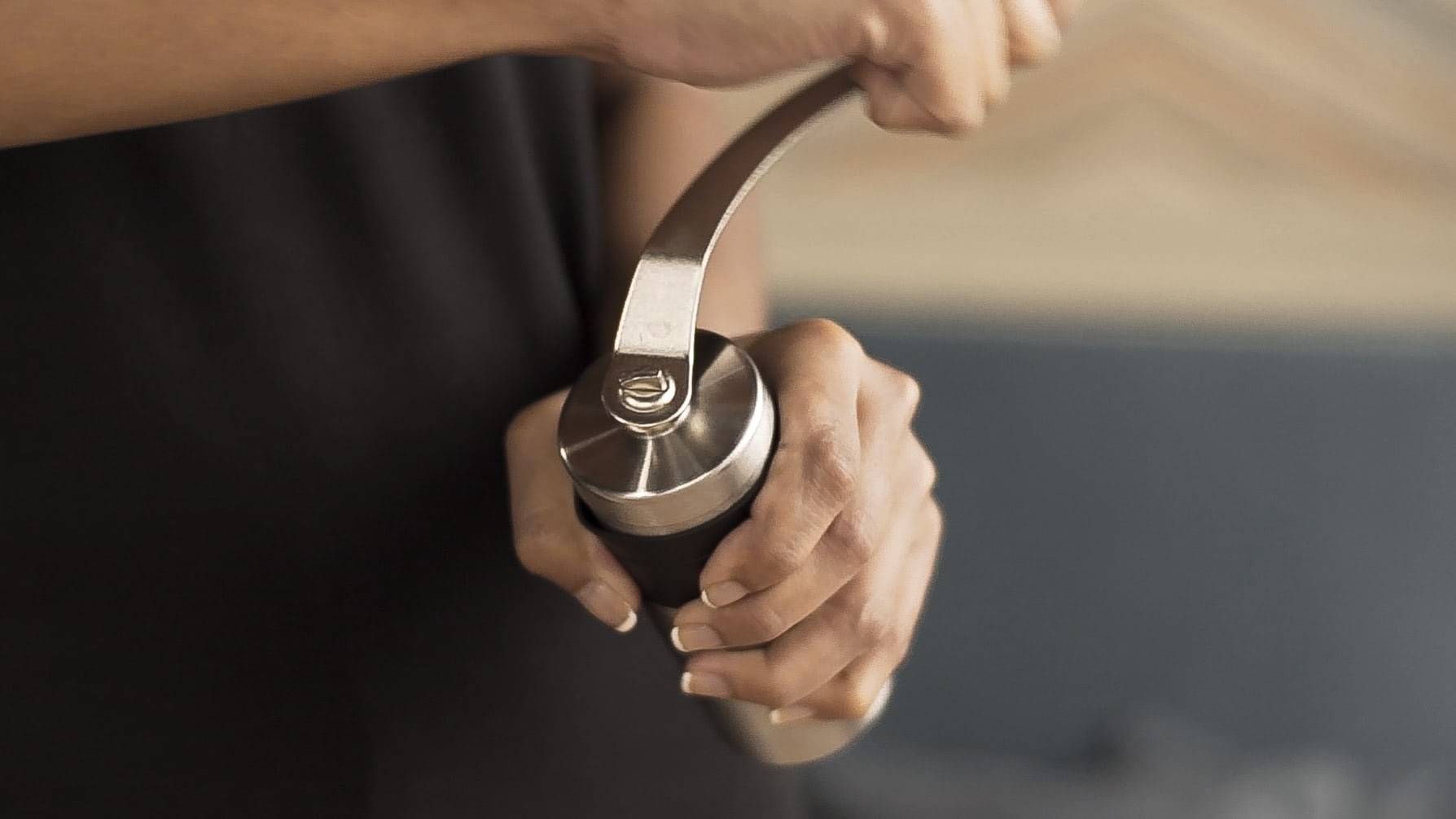
- Always experiment with your grind just like with the other aspects of your brewing process. You may try today’s brew with a fine grind and depending on how you like the taste, you may change the grind size to be larger or smaller. There is no one-size-suits-all grind; experiment to find out which grind size suits your coffee best for your taste.
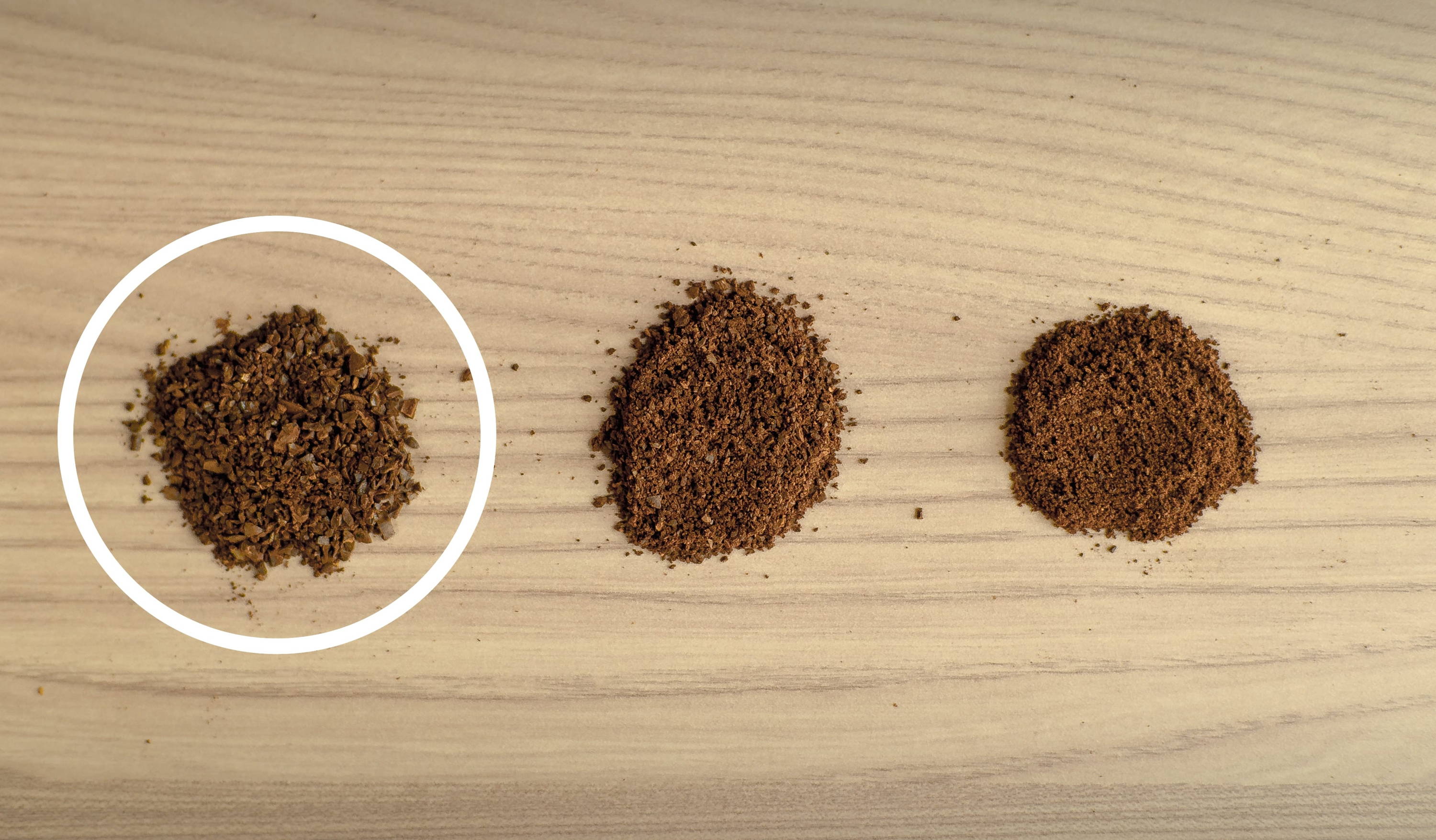
Step 4.
Add the grounds to the French Press
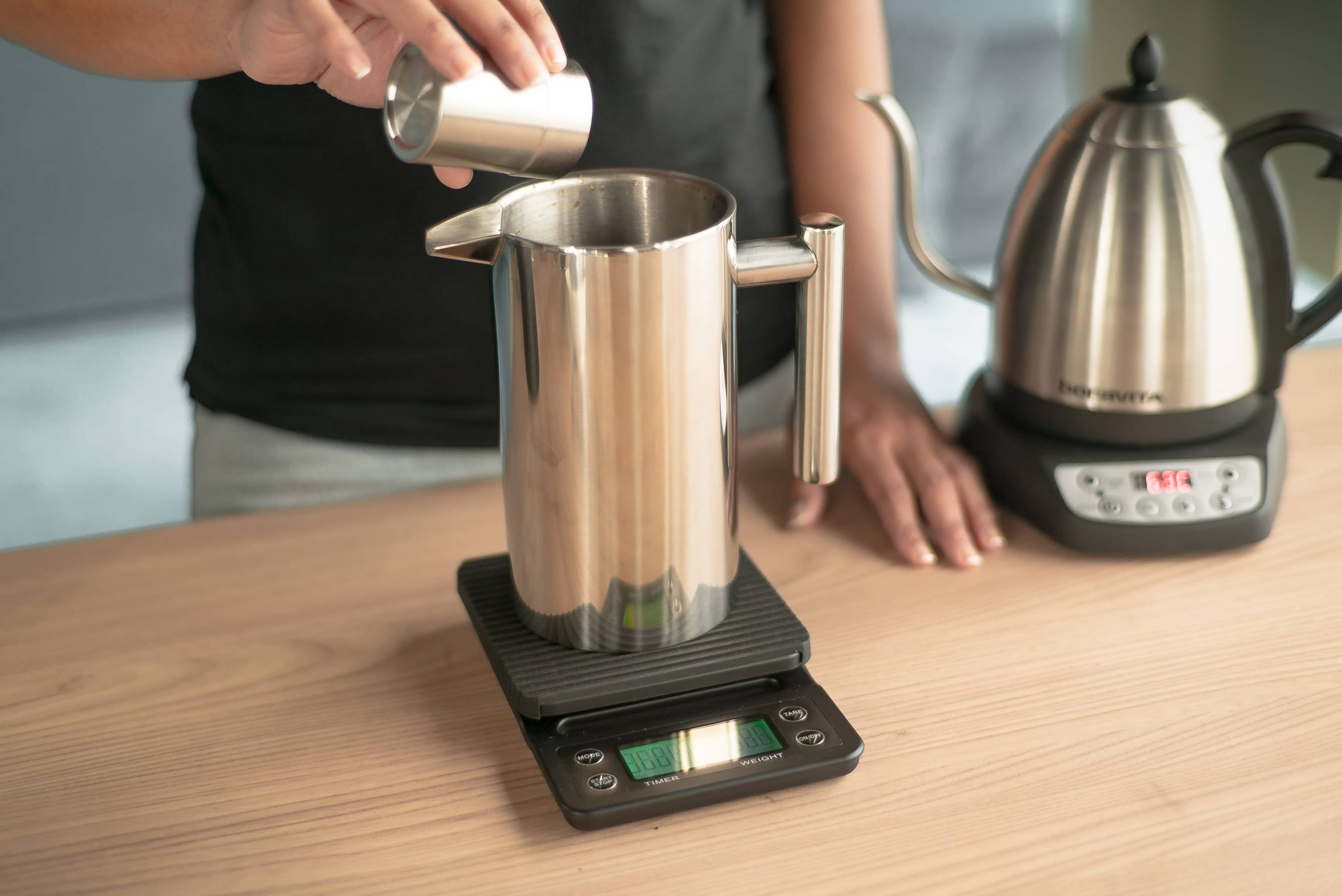
Step 5.
Begin your brewing
- Place the French Press on the scale. Tare your scale to reset the reading to zero and then start the timer when you’re ready to start pouring. This recipe calls for 2 separate pours:
- This recipe calls for 2 separate pours:
1st Pour
- Pour roughly twice the amount of water for the first pour as your coffee dose. In this case for 34g of coffee, pour 70g of water over the grounds.
- After pouring, give time for the coffee to ‘bloom’. This ‘bloom’ releases CO2 gas escape from the coffee for better extraction and allows the coffee to saturate thoroughly. The pour itself should take 10-15 seconds, while the bloom takes up to 30 seconds.
- Pro tip: in between pours, gently stir the grounds to ensure the grounds are thoroughly saturated and promote even extraction.
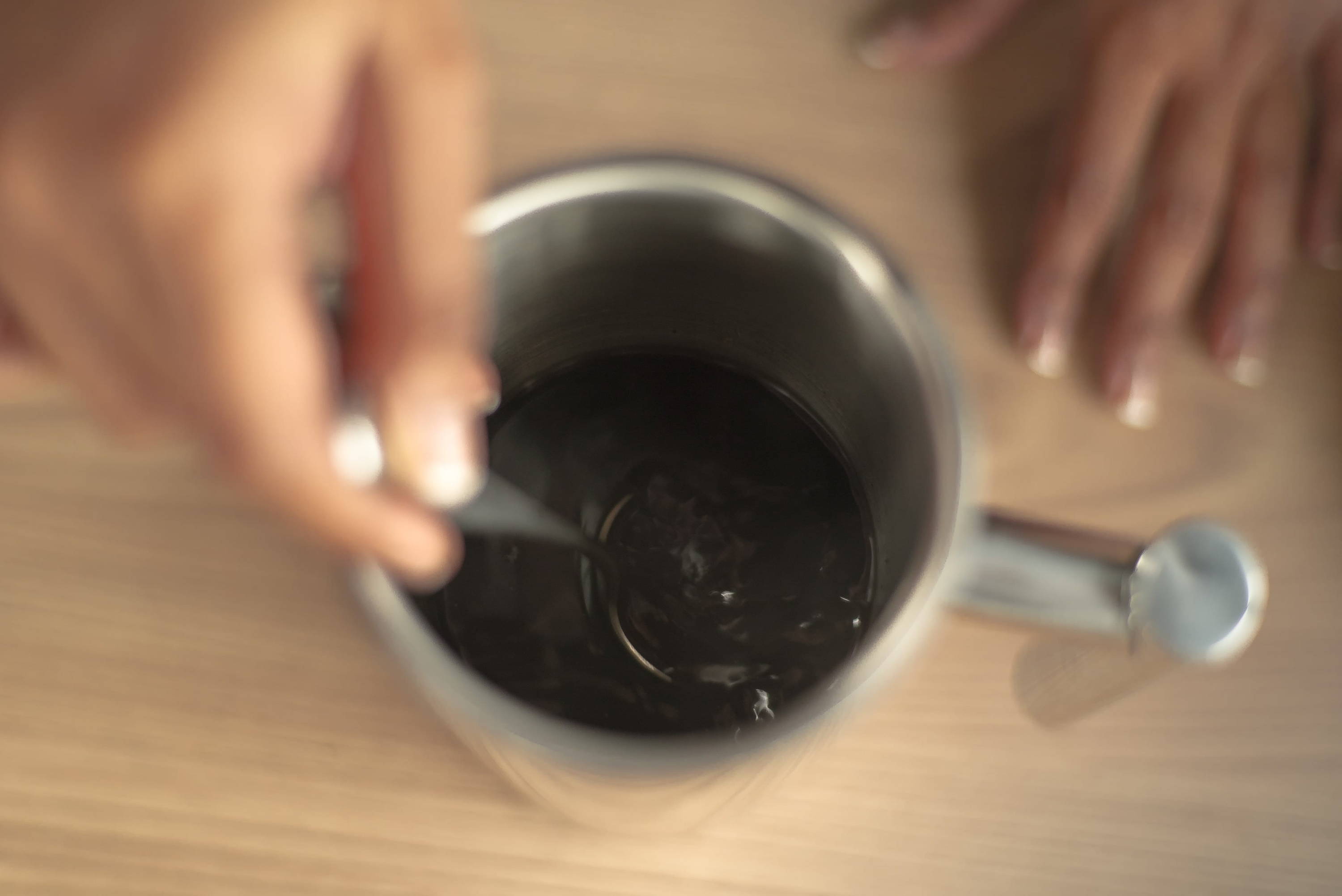
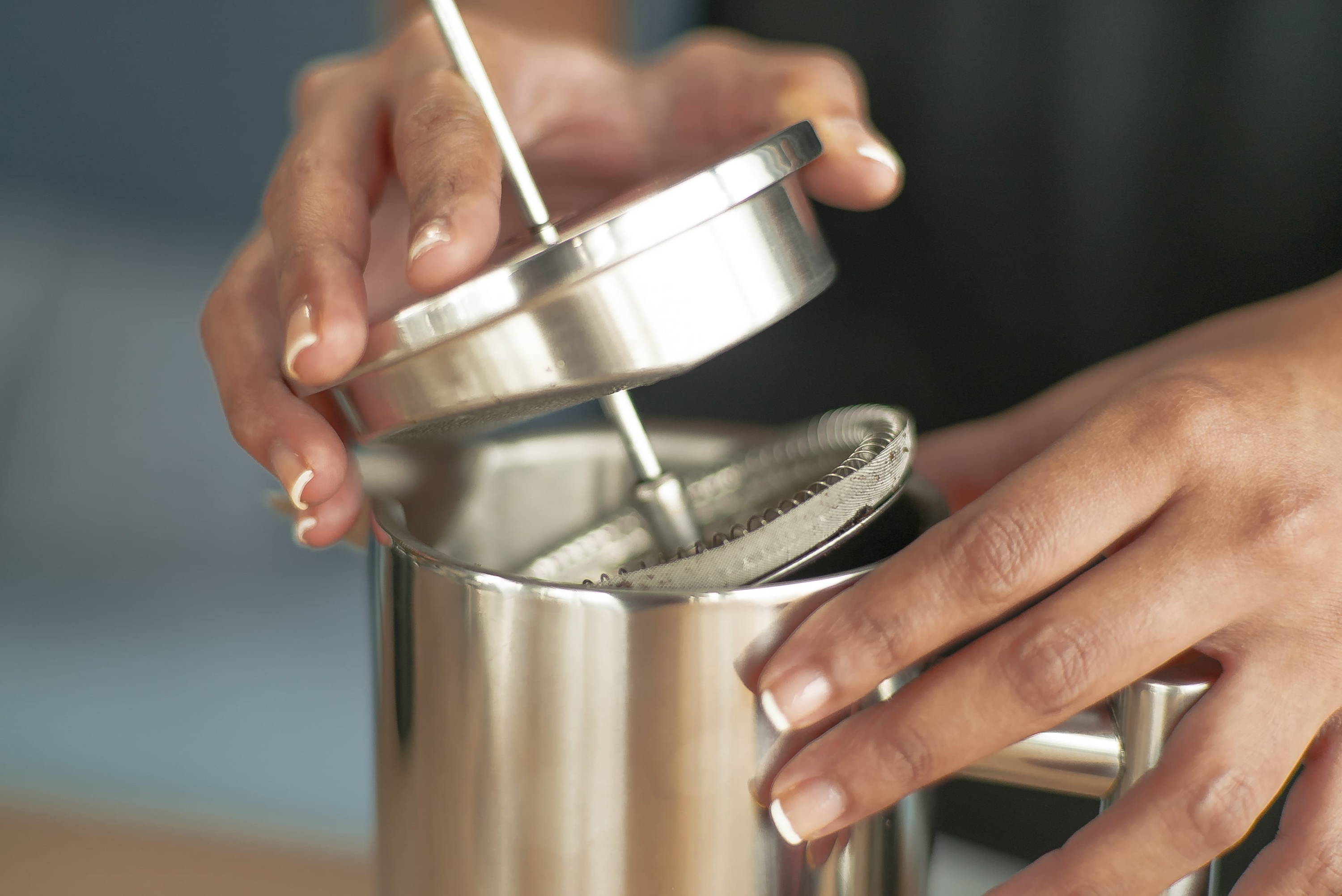
2nd Pour
- Pour the remaining water into French Press and place lid and plunger gently over the grounds. Don’t plunge yet. Allow the coffee to steep for 4 minutes.
- After 4 minutes of steeping, remove the lid, break the crust that forms at the top of the brew and stir the coffee again.
- Pro tip: Skim off the white foam that forms on the surface of the coffee using two spoons. This white foam tends to taste bitter because it contains a lot of dissolved solids.
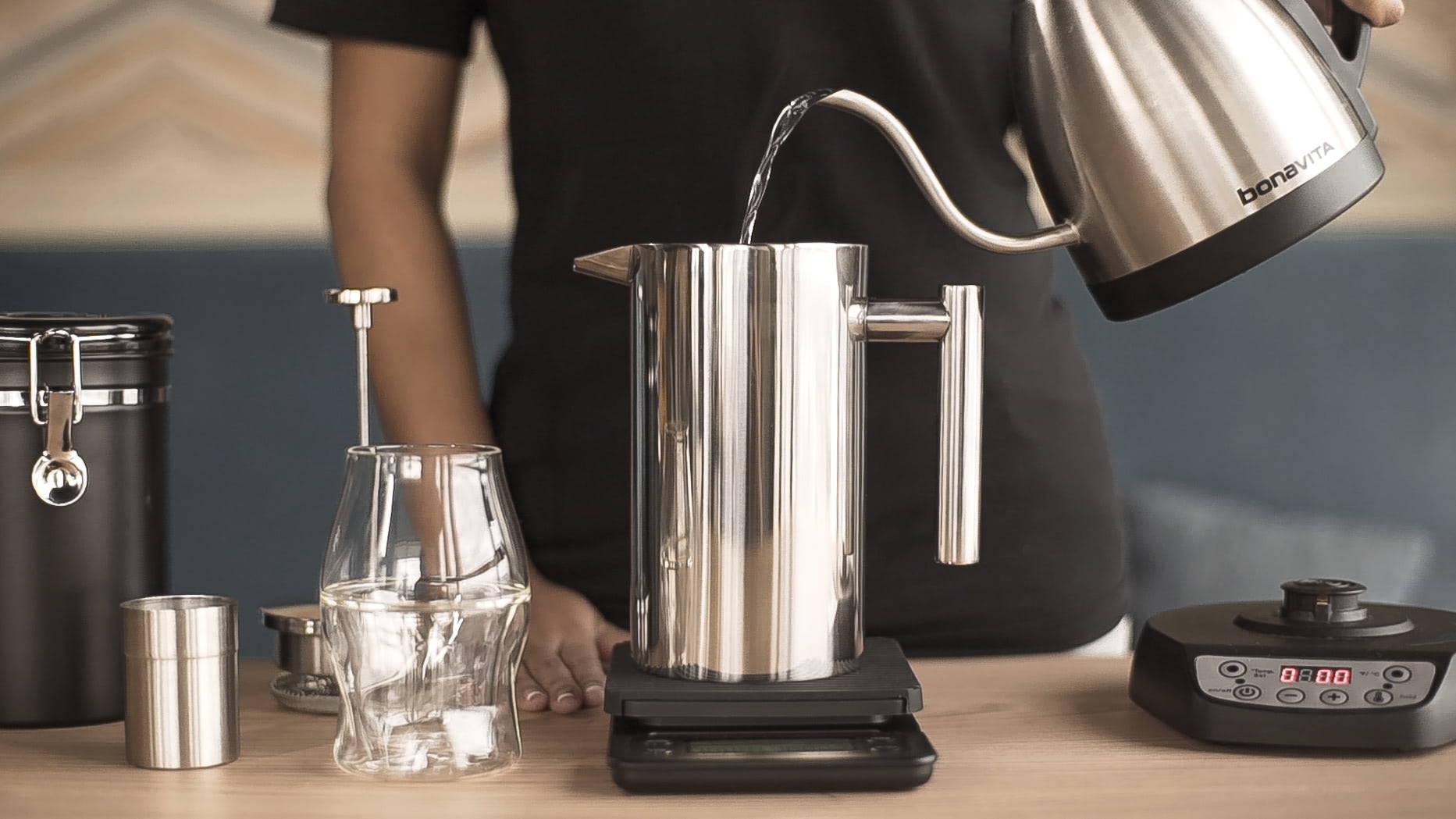
Step 6.
Plunge
- Take the French Press off the scale. Place the lid and plunger over the French Press. Press down on the plunger slowly.
- If the plunge is very difficult, it means your grind is to fine (strong coffee); if it’s too easy to press, it means your grind is too coarse (weak coffee).
- Once you’ve finished pressing, serve the coffee immediately or pour the coffee into a separate serving vessel to avoid over-extraction.
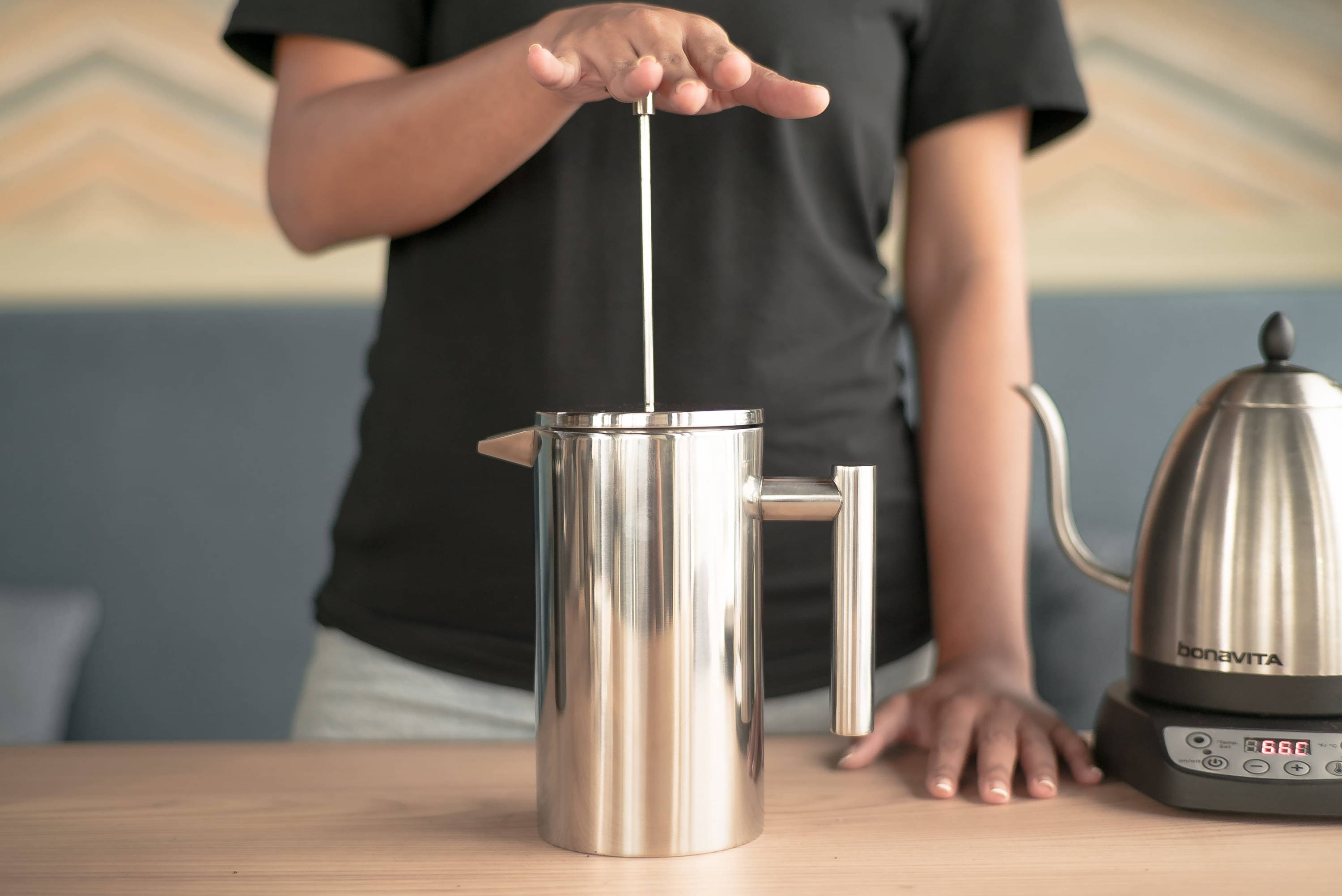
Step 7.
Pour & Enjoy
- Stir the coffee brewing vessel to ensure the coffee is well mixed. The coffee at the top will be weaker than the coffee at the bottom, so it’s important to mix your coffee well before serving.
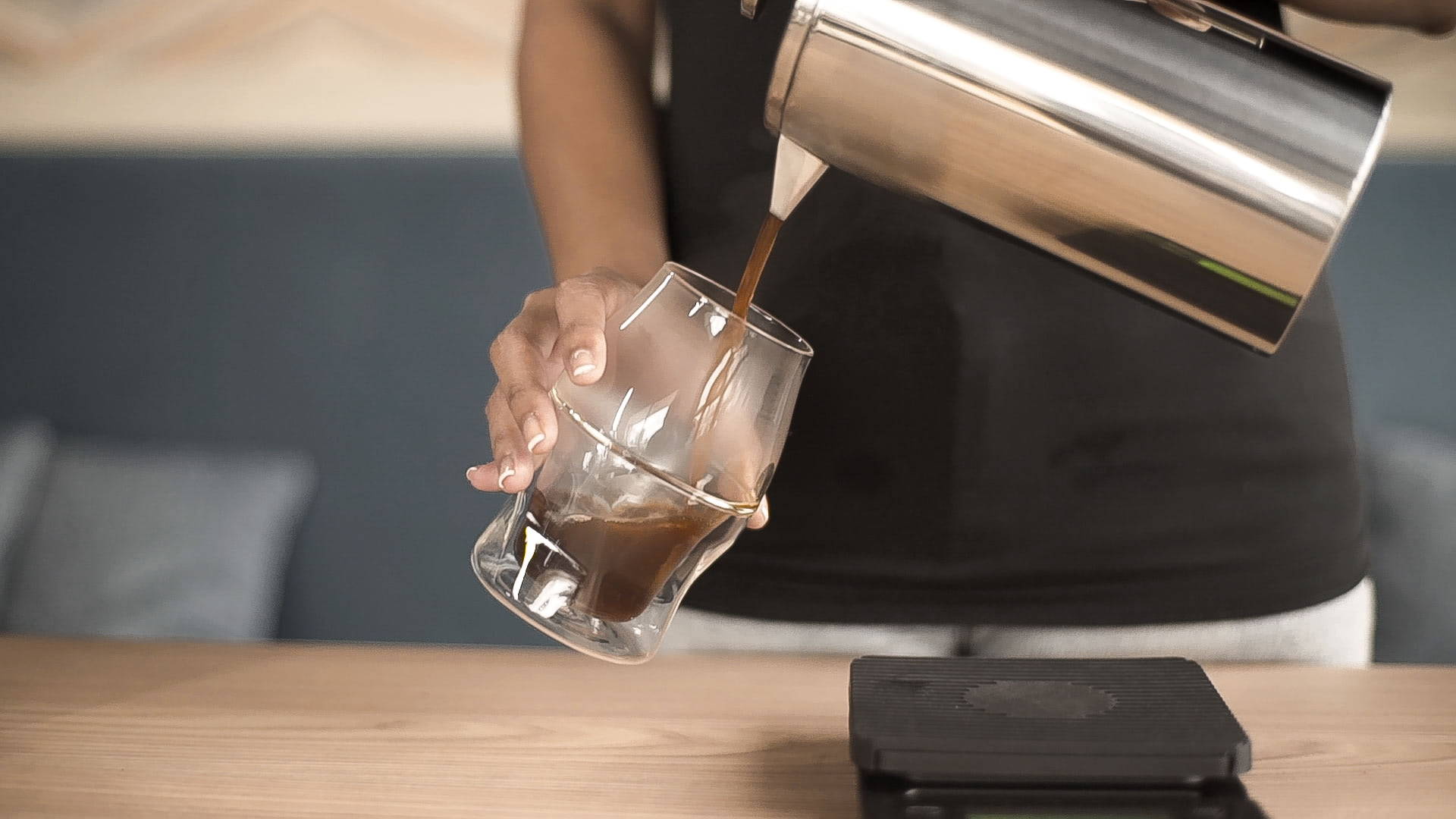
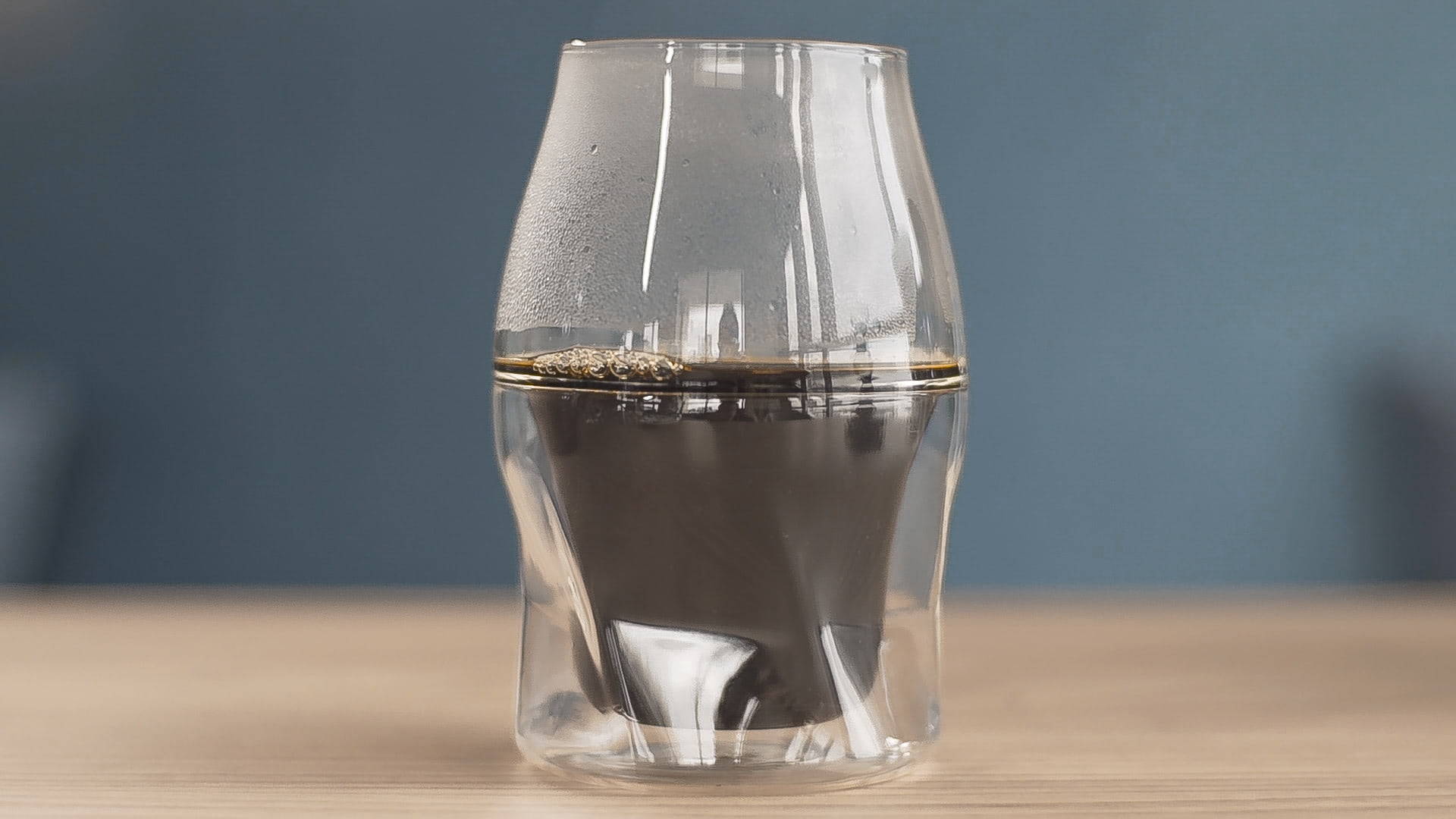
Adjusting your brew to your taste
- If your brew tastes bitter and astringent (over extraction), then you need to grind coarser
- If your brew tastes watery and sour (under extraction), then you need to grind finer
